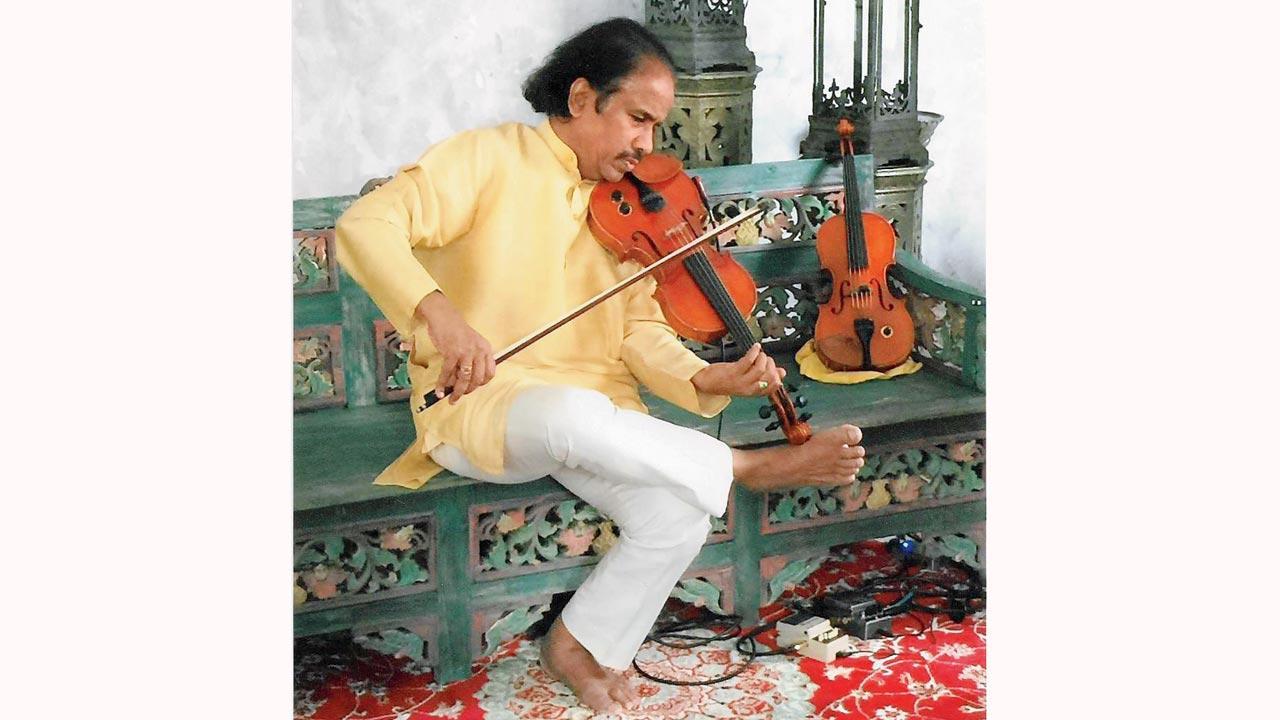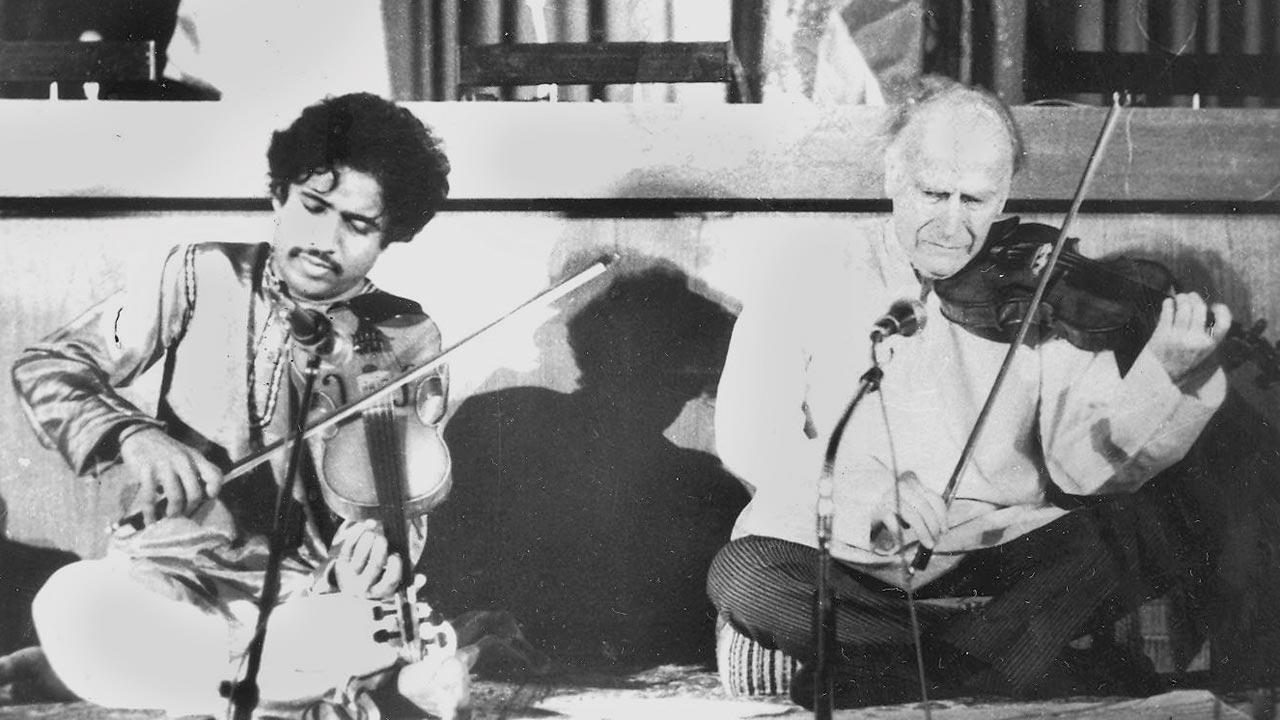Written for music students, Dr L Subramaniam’s book devises a thirty-six-scale concept that will equip Indian composers with tools that can lead to their compositions being performed by orchestras across the globe

Dr L Subramaniam
As a young student, Dr L Subramaniam set about creating a system that would integrate the melodic nature of the Indian raga system with the harmonic structure of Western classical music. What those early years of study—tried and tested over the decades—led to was the possibility of orchestral compositions for Indian ragas, evoking their mood within the rich sound of symphony orchestras.
ADVERTISEMENT
Raga Harmony reveals Dr Subramaniam’s revolutionary thirty-six-scale concept that will allow compositions by Indian composers based on Indian ragas to be performed by some of the most prestigious orchestras across the globe. The use of this system enables the generation of lush harmonies that are not only uncommon and pleasing, but also intellectually intriguing.
Excerpts from an interview
What thought sparked the writing of this book?
First of all, I was introduced to musical theory in addition to practical music by my father. When I was in high school, my father used to teach some of the students who were doing MPA from Stella Maris College and other colleges in Chennai. So, they used to come to learn the theory and he used to type a lot of material for the students which is fresh and easily understandable and distribute the notes. He used to also make sure that I also read it and that’s how I learned and got introduced to theory. Subsequently, when I went to the US on a scholarship to do my masters in western classical music, I was also given a teaching position to teach Indian classical music to the western students who were doing Bachelors and Masters degrees in music. I couldn’t get a suitable book for the students to follow which was simple enough to introduce Indian music to the uninitiated western students. So I decided to write books which will easily be understandable by anybody who doesn’t have any exposure to Indian classical music.
Who is the book written for?
This book is written for music students who are interested in composition and who have a strong Indian base and want to write orchestral compositions. This gives an insight into how you can write major orchestral compositions using ragas and creating unusual and powerful harmonies.
Indian music leans towards raga and taal, while western developed harmony. Do you think a complete coordination between them is possible?
There will be similarities and differences between any two musical systems, not only western classical and Indian classical. Of course, Indian classical music focuses more on melodic (horizontal) movement involving micro tones. South Indian classical (Carnatic) music is very structured and scientifically based. It has a 72-parent scale system and derived from this we can get an unlimited number of derived scales. Western classical music is based on a tempered system and not a micro tonal system but it has both horizontal and vertical movement. This vertical movement creates harmony because different notes are played by different instruments at the same time creating harmonic movement. In my orchestral compositions, I have taken both the raga (melodic) and taal (rhythmic) concept of Indian music, creating major orchestral compositions with very rich raga-based harmony. These orchestral compositions have been performed worldwide with major symphony orchestras and choir.
What do you think is the future is music, especially with AI in the picture?
There is always a future in music. Music has survived for centuries. Even today, we hear Thyagaraja, Muthuswami Dikshitar and Shyama Shastry‘s compositions as well as Beethoven, Bach, Tchaikovsky etc. Classical music connects society to its roots. It has also been evolving through different generations. AI, in many ways, is very positive. It has to be used to enhance creativity and not for wrong purposes.
 Dr L Subramaniam with Lord Yehudi Menuhin performing his raga-based composition ‘Journey’ at the United Nations, New York
Dr L Subramaniam with Lord Yehudi Menuhin performing his raga-based composition ‘Journey’ at the United Nations, New York
EXTRACT: ‘Ragas are based on scales, but all scales are not ragas’
Ragas are based on scales, but scales played are not considered ragas, because a raga includes ornamentation and emphasis on certain primary notes (the vadi being the most significant note and the samvadi being the second-most important). The vadi is in the first tetrachord (purva anga) and the samvadi can be the fourth or the fifth note. The samvadi is said to emphasise the importance of the vadi. The remaining notes are known as anuvadi or residual notes. The notes which are dissonant, and do not belong to the raga, are known as vivadi swaras.
It is useful to remember that although ragas are based on scales, they do not have key signatures. This is because key signatures presuppose a fixed key, but a raga can be sung in any key, and the relative intervals are more important than the key of the tonic. In this way, ragas are closer to modes than keys, raga and mela in Carnatic music because modes also are dependent on intervals and not keys.
Another characteristic feature of Carnatic music is its use of microtones, which are often less than a quartertone. Instead of dividing an octave into twelve semitones like in the West, an octave is divided into twenty-two srutis (tones). Based on this system, the tonic and the dominant are always fixed and can be only one tone each. The rest five of the seven notes (the supertonic or Ri, median or Ga, subdominant or Ma, submediant or Da and the leading note or Ni) can each be of four types. Thus, they are twenty-two srutis.
The difference between scales and ragas
The 5,184 scales can be made into ragas by following the rules which create a raga, like by creating a vadi, samvadi, and some typical phrases with ornamentation.
In a raga, the different types of notes are:
1. Vadi: The swara which plays the most important part
2. Samvadi: Any two swaras which are at an interval of nine or thirteen srutis from each other and are mutually consonant
3. Vivadi: If the notes are at an interval of two srutis and the swara sounds discordant to another
4. Anuvadi: The assonant notes remaining after vadi, samvadi and vivadi
Vadi and samvadi are the primary notes, which are emphasised during raga development. Usually from the vadi, the fourth or fifth note becomes the samvadi.
These notes can be emphasised in different ways:
1. By repeating the note more frequently than other notes
2. By holding the notes for a longer duration than other notes
3. By keeping the note as tonal centre, developing around it and coming back to that note as a resting note
In ragas, certain notes are ornamented with slides, known as gamakas. In certain cases, multiple slides are used for the same note. It is also common to slide towards a note, from a note below or from a note above, and it is even possible to slide more than one note interval, and in different directions to reach a note, in order to bring in the essence of the raga.
These will give a particular colour and mood to the raga. There should be a graha swara, anuswara and nyasa swara. In any raga, in order to create a composition, it is necessary to have some scope for development. It is also important to create a certain mood or essence, or feeling for someone who is listening to the raga. If we create 5,184 ragas by following the above rules, they cannot be expanded into 62,208 by multiplying into the twelve semitones. This is so because whichever semitone is used, the relative interval will stay the same. For example, Shankarabharanam is the same raga whether it is in C, C# or D.
Excerpted with permission from Raga Harmony: Harmonic structures and tonalities in Indian classical music by Dr L Subramaniam by Westland Books
 Subscribe today by clicking the link and stay updated with the latest news!" Click here!
Subscribe today by clicking the link and stay updated with the latest news!" Click here!







